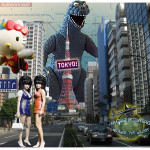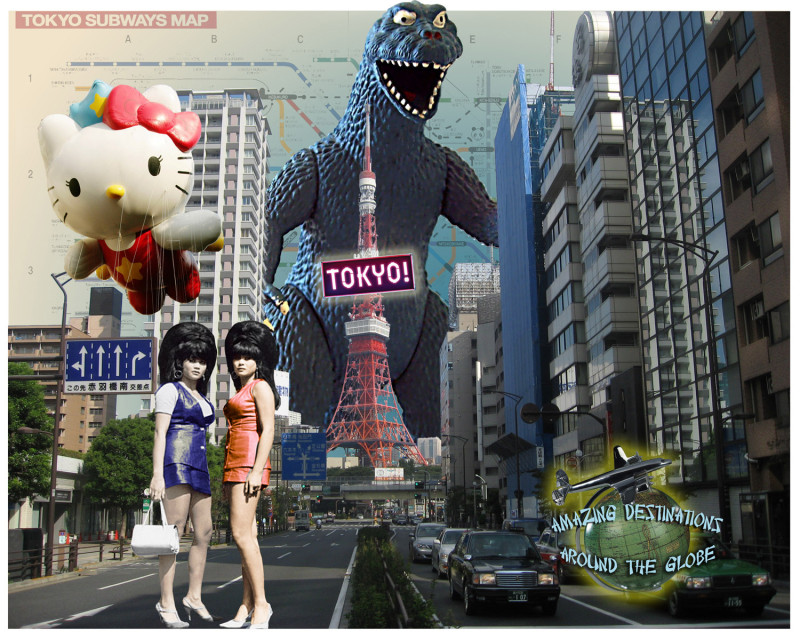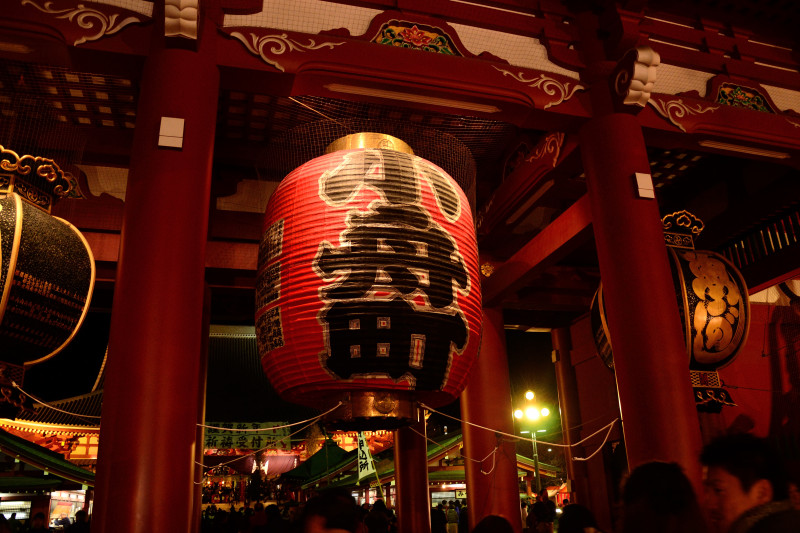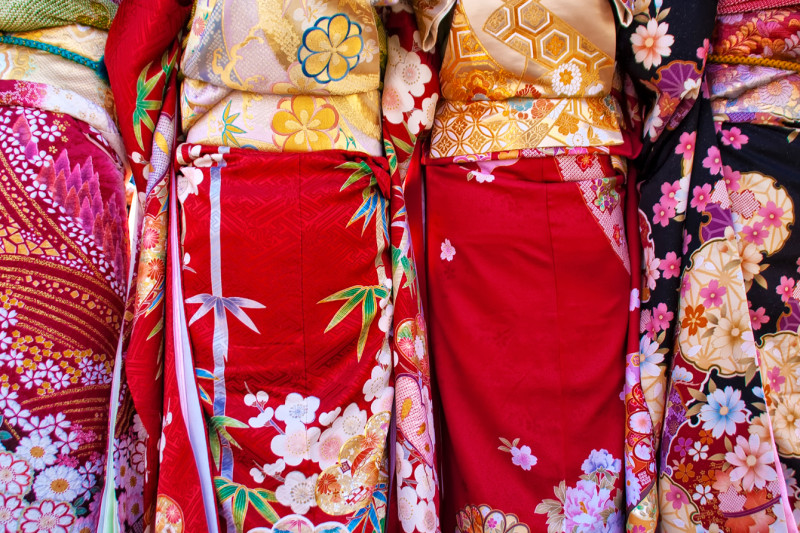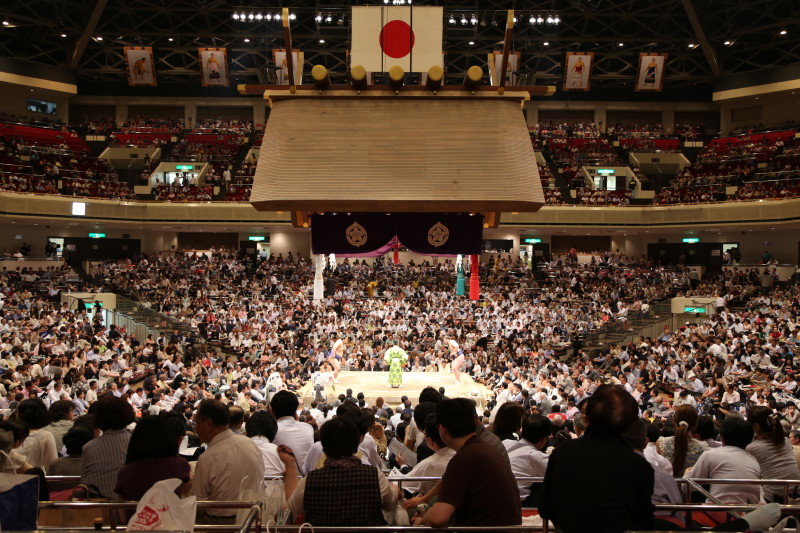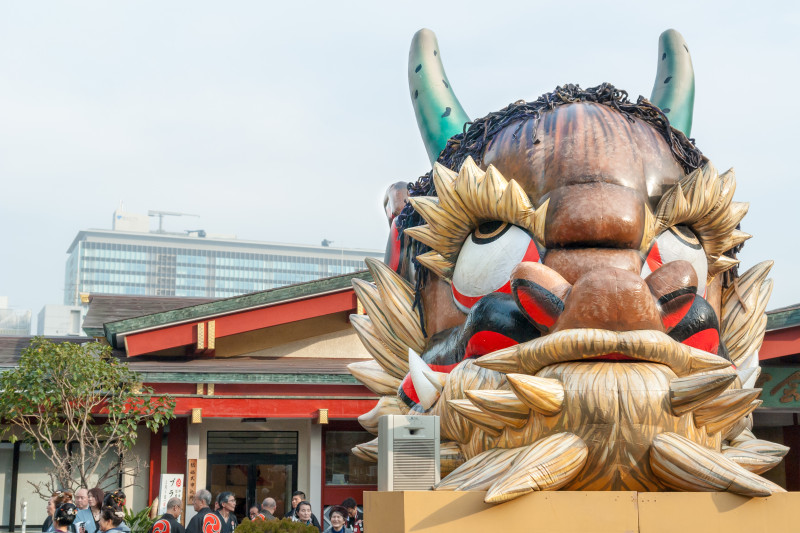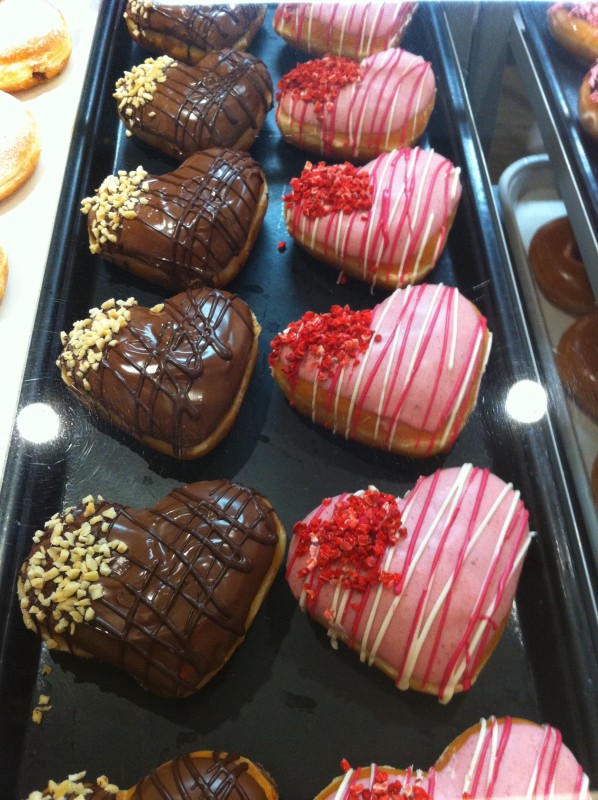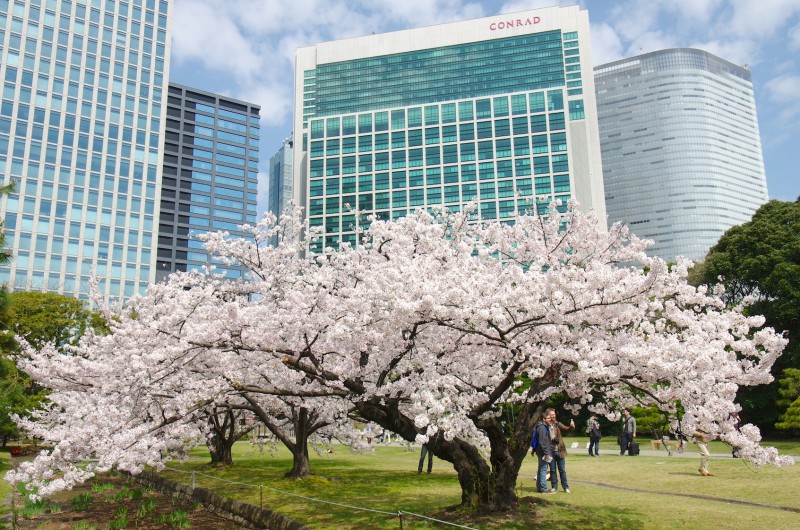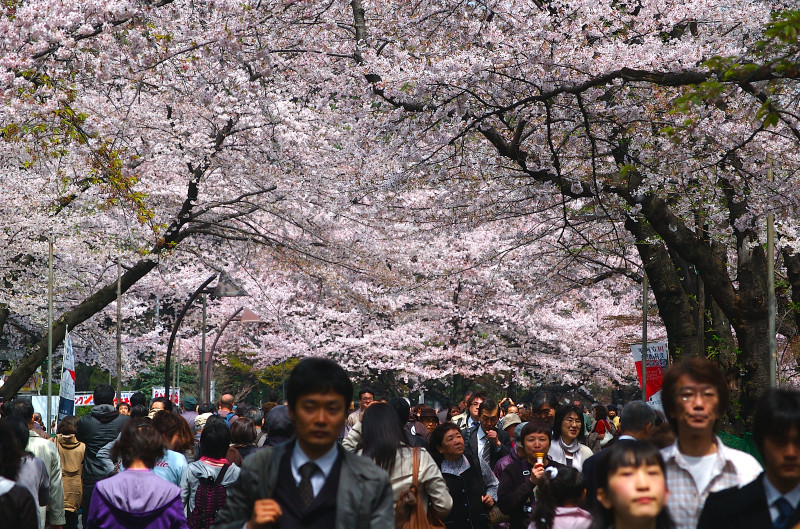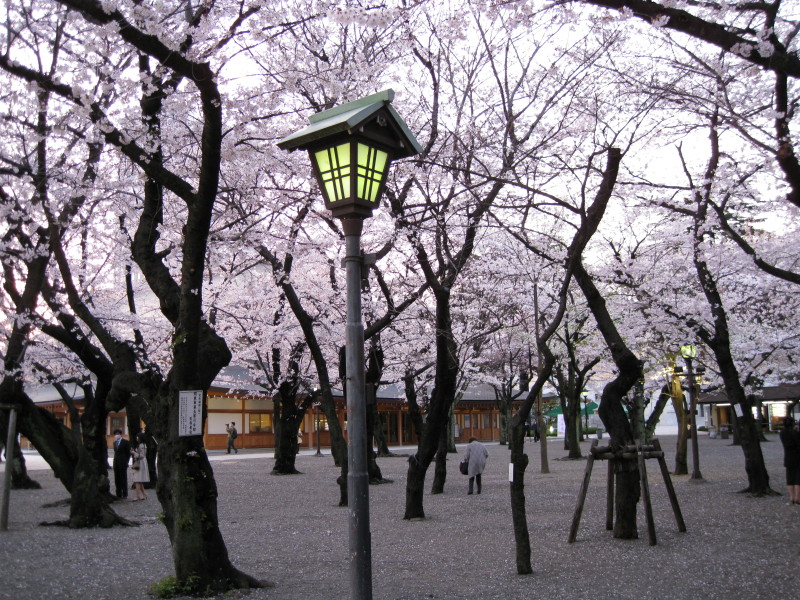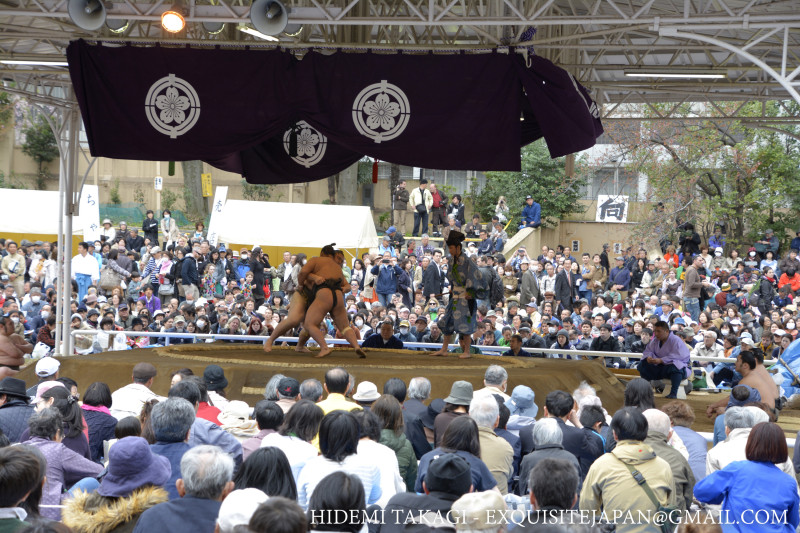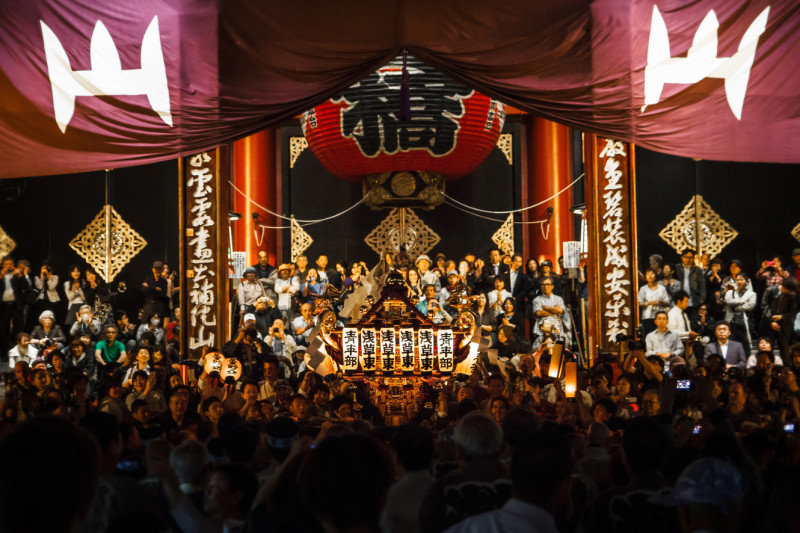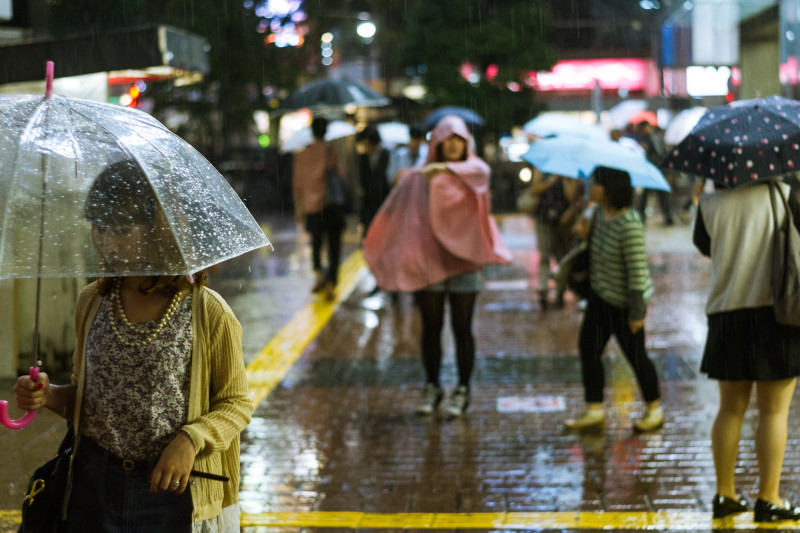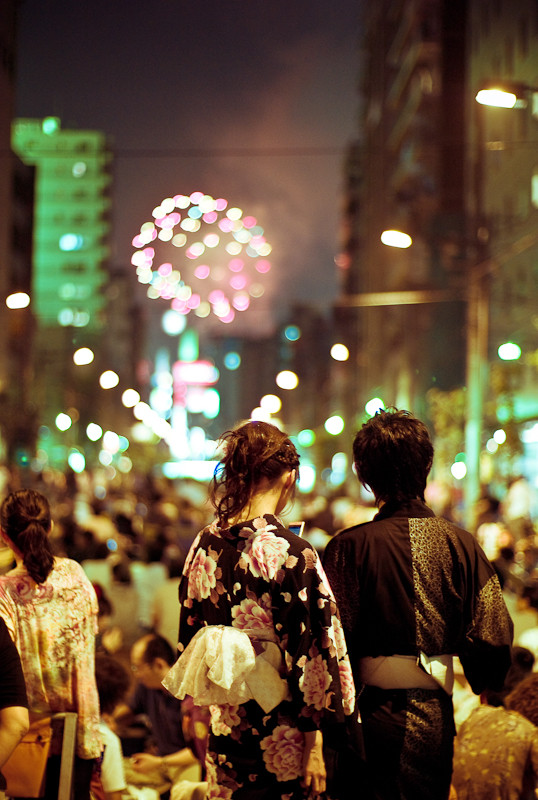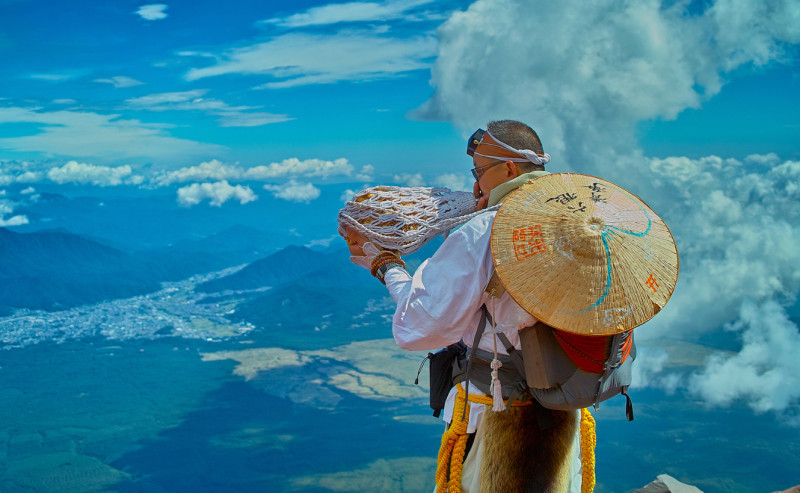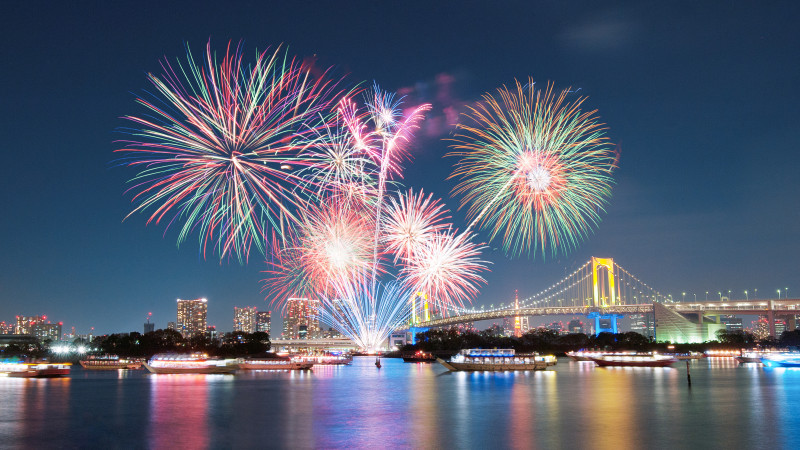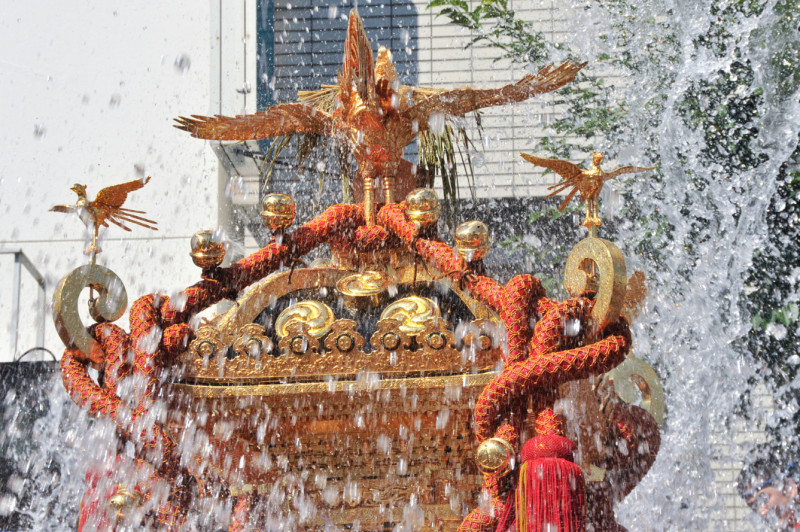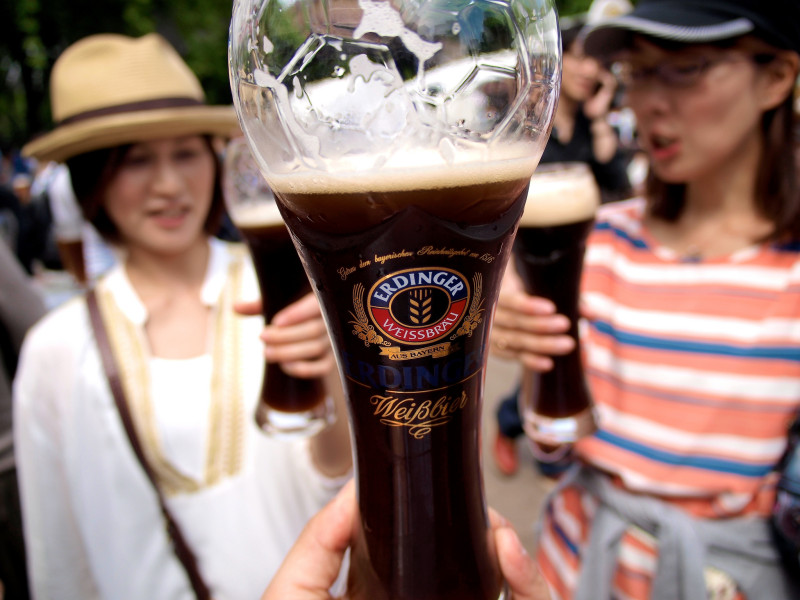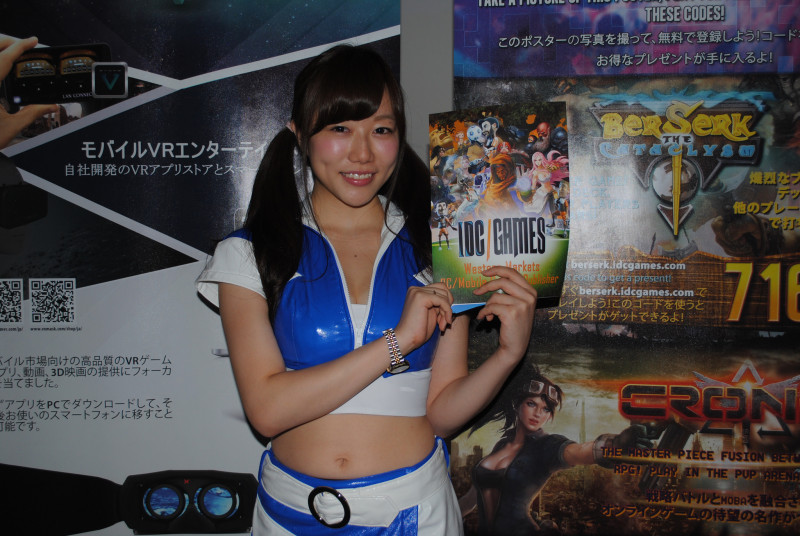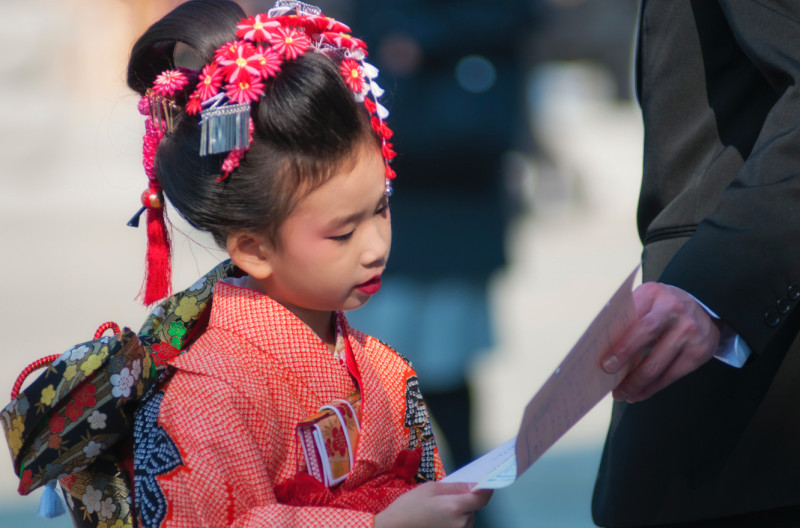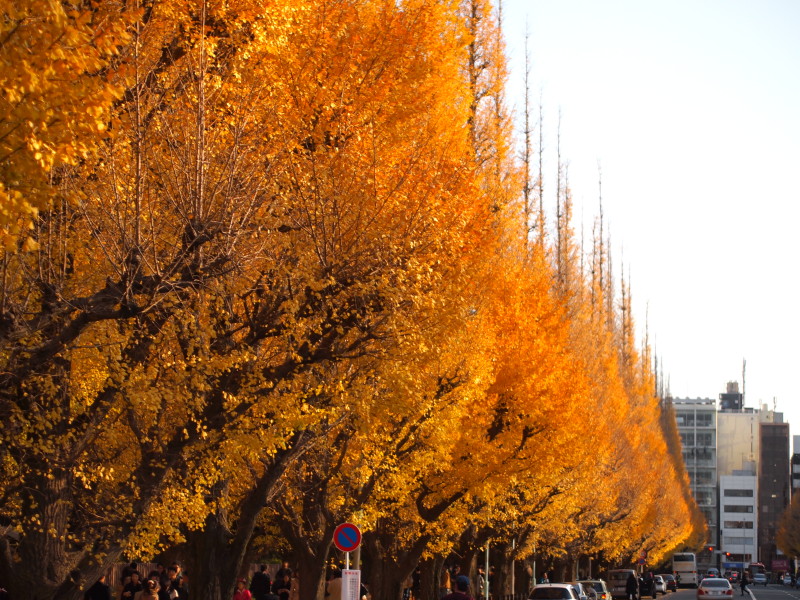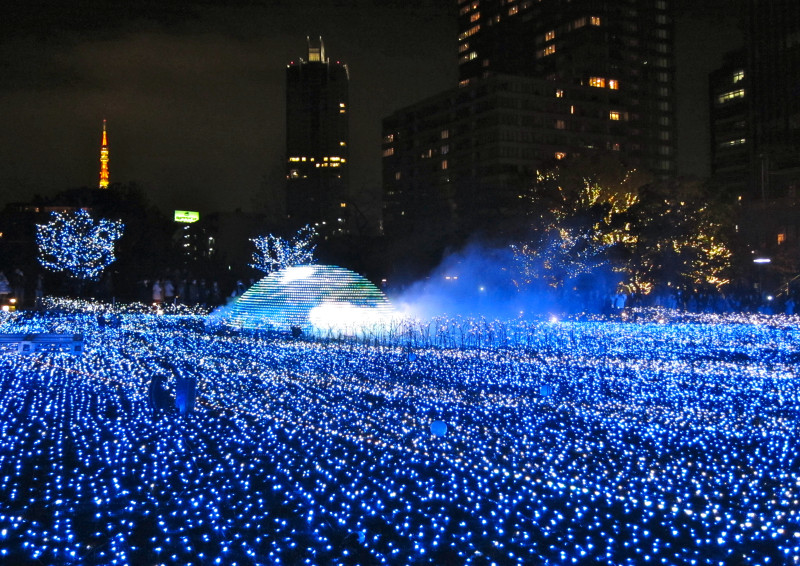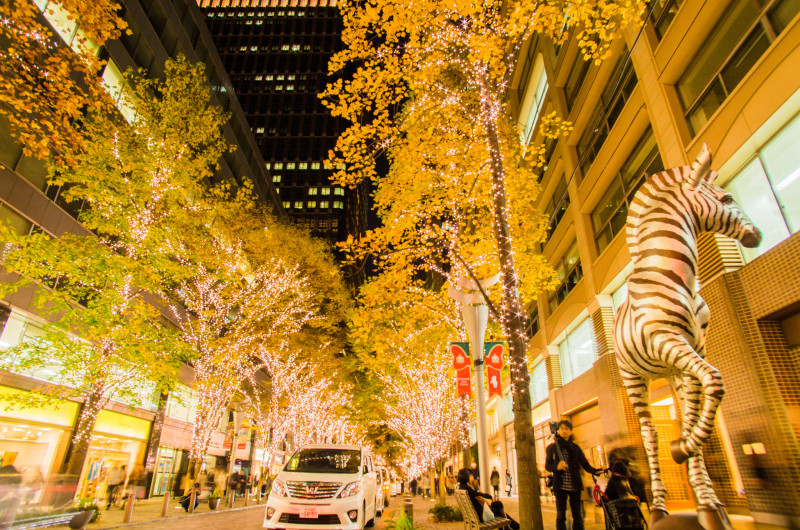Are you planning to come to Tokyo in the near future but not sure at which time of the year is the best one to visit? Well, have no worries whatsoever! Tokyo is fun all year long and each season has its own style and attractions which you can enjoy. Although many people likes to visit Japan at the famous spring time when the Cherry blossoms and Japan is not too cold or too hot, but as a born and raised Tokyo resident, I can tell you that Tokyo has a beauty of its own in all seasons and is just like a women who changes her cloths to look different for certain events, so does Tokyo. This city looks completely different in Winter, Spring, Summer or Fall. Those changed are subtle and gradual and evolve every day and every month as the year goes on, but one thing you can be sure of, all you need is to blink for a moment and something around you in Tokyo will change!
This article will explore each month of the year throughout the changing seasons and let you have a glimpse to Tokyo at each particular month so you can get prepared and enjoy what the city has to offer for its fullest in each month of the year.
January
January weather in Tokyo is quite cold. Temperatures can plunge to -2°C at nights and the city usually experience its first snow of the year. But don’t let the cold weather mislead you, Tokyo people love the winter and there are always things to do to enjoy the cold weather in winter festivals and outdoor events or to hide from it in a cozy place and enjoy warm food. The first week of the month is when you can join the millions of people who visit Tokyo shrines and temples for a New Year resolutions, prayer and contemplation. January 1st to 7th is that special time of the year when the shrines and temple offers variety of services to the millions who come for a blessing or a prayer. The best places to visit in Tokyo are Meiji-Jingu Shrine in Harajuku or Senso-ji Temple in Asakusa. In there you can find the time to both make a prayer as well as buy all sort of protection talismans for a successful year at work, studies, or in your personal relationship.
January, is also the time of the first Japanese holiday of the year called – “Coming of Age” celebrations (“Seijin no Hi“ in Japanese), which is celebrated on the second Monday of the month, January 11th and is held in order to congratulate and encourage all those who have reached the age of 20 years old over the past year, and to help them realize that they have become adults. The age of 20, is also the age where as an adult, you are allowed to drink alcohol, and one can imagine the wild parties around Tokyo at that day! A great place to see the ceremonies in Japan is in Meji-Jingu Shrine in Harajuku. All day long there are adulthood ceremonies going with girls wearing traditional Kimonos and the boys wearing their best suits and you can even get a chance to see traditional Archery
Information
- Place: Meiji-Jingu Shrine
- Address: 1-1 Yoyogikamizonocho, Shibuya, Tokyo 151-8557
- Tel: 03-3379-5511
- Website: http://www.meijijingu.or.jp/english/index.html
Information
- Place: Senso-ji Temple
- Address: 2 Chome-3-1 Asakusa, Taito, Tokyo 111-0032
- Tel: 03-3842-0181
- Website: http://www.senso-ji.jp/about/index_e.html
Speaking of tradition, January is also the month when you can enjoy the first Sumo tournament in Tokyo. This ancient Japanese traditional sports has become extremely popular in the past 20 years and the first tournament of the year is held in Ryogoku Kokugikan, (Ryogkoku National Sports Hall) which is located in Ryogoku neighborhood, just a couple of minutes walk from the JR or the Toei Oedo Line stations. The first tournament of the year is always very exciting, and if you want see the Sumo Rikishi face to face, you can always stand outside the Kokugikan hall at the back exit and see the Rikishi all coming in Taxies and special cars and walk in, greeted by fans and just onlookers who want to see those massive man walking in and waving the crowds.
Information
- Place: Ryogoku Kokugikan
- Address: 1-3-28 Yokoami, Sumida, Tokyo 130-0015
- Tel: 03-3623-5111
- Website: http://www.sumo.or.jp/kokugikan/index.html
February
February is the coldest time of the year in Tokyo but it is also the first month where you can feel the signs of spring hinting to a warmer weather coming at the very end of the month. It is sort of transitional month in Tokyo from the strong grip of freezing weather of January into the coming celebrations of spring time of March. The city plum trees (“Ume” in Japanese) and flowering everywhere, and you can spot the plum blossom everywhere.
To kick start this transitional month into spring, Tokyo Shinto shrines are the place to be every February 3rd of the year. The shrines are celebrating at this day “Setsubun” – the coming of spring day in which Japanese people enjoy a special ritual to cleanse away all the evil of the former year and drive away disease-bringing evil spirits for the year to come. This ceremony is held in all of Tokyo shrines and you will see some of the most famous Japanese celebrities, TV personalities, and top athletes are enjoying the atmosphere and throwing candies and beans over the celebrating crowds from platforms and specials stages. One of the best places to enjoy the Setsubun ceremony is in Kanda Myosin shrine near Akihabara. The shrine always decorating the court with a huge 6 meters high devil (“Oni” in Japanese) float which you can take pictures with, and then at around 3pm, the celebrities and special guests start to throw the candies and special holiday packs from the second floors of the shrine onto the hundred of people below. Since this shrine is next to Akihabara, expect the unexpected, there are always special promotion, and lots of cosplay people walking around and enjoying the atmosphere!
Information
- Place: Kanda Myojin Shrine
- Address: 2-16-2 Sotokanda, Chiyoda-ku, Tokyo 151-8557
- Tel: 03-3254-0753
- Website: http://www.kandamyoujin.or.jp
To add to the special atmosphere in February, you can expect Tokyo to turn into chocolate wonderland. Valentines day, celebrated on February 14th turn the city shopping districts to Chocolate heaven! You can see the most amazing chocolate displays in Ginza department stores. If you are a chocolate lover, this is the greatest time for “tasting” it as all shops and stores usually offers free samples at the entrance or right outside the store. It is very common to “try before you buy” some of their special treats so enjoy walking around and trying this delicious freebies!
Information
- Place: Ginza Mitsukoshi Department Store
- Address: 4−6−16 Ginza, Chuo-ku, Tokyo 104-8212
- Tel: 03-3562-1111
- Website: http://mitsukoshi.mistore.jp/store/ginza/fcs/english
March
March is the the month when Tokyo experience a metamorphose from the cold winter into full swing Spring time and the city is a buzz in a frenzy of Cherry Blossom events which eclipse toward the end of the month into the “Hanami” weekend, when the Cherry trees are full blooming and people in Tokyo turn their attention to the beauty of nature and celebrate it according, with Japanese Sake drinking under the trees and almost in every park or greenery everywhere. You can pretty much enjoy the blossom everywhere but I would highly recommend to enjoy the early blossom at the Hamarikyu Gardens which is located very close to Tsukuji market. The gardens are open from 9am to 4:30pm is holding some of the most majestic Cherry trees in Tokyo. If you go there in evening time, you will probably notice full TV drama and movie sets which use the park very special blossom to shoot some of the most beautiful shots of the blossom in the Tokyo area.
Information
- Place: Hamarikyu Gardens
- Address: 1-1 Hamarikyuteien, Chuo, Tokyo 104-0046
- Tel: 03-3541-0200
- Website: http://teien.tokyo-park.or.jp/contents/index028.html
Another beautiful spot to enjoy the Cherry Blossom is Ueno Sakura Matsuri in Ueno Park. This event starts in mid march and goes on into the first week of April and offers a beautiful scenery of Cherry Blossom in daytime as well as amazing Cherry trees illuminations at night. The park use thousands of lanterns to create a special atmosphere and street vendors add to the festivities with traditional Japanese food stalls you can enjoy to the very late hours of the night.
Information
- Place: Ueno Park
- Address: 5-20 Ueno-Koen, Taito-ku, Tokyo 110-0007
- Tel: 03-3828-5644
- Website: http://www.kensetsu.metro.tokyo.jp/kouen/kouenannai/park/english/ueno.pdf
April
April is probably one of the nicest time to visit Tokyo. The weather is perfectly comfortable as spring is in full force and the biggest Hanami (Cherry Blossom celebrations) events is taking place on the first week of the month. Although the Cherry blossoms around the end of March, it is the first week of April when it is in full bloom and most of the very big events are taking place in this week, while the first weekend of April is considered to be the main time to enjoy the full blossom.
One of the best places to experience the full bloom is in Yasukuni Shrine which is located in close proximity to the Imperial Palace. The shrine is holding a special Hanami Festival in which visitors can enjoy a full bloom of over 600 trees as well as enjoy a special performance stage on which Japanese traditional dance, music and marital art performances are been held all day long. To top it all, the Shrine is also holding in the festival a free full scale Sumo tournament! The tournament is called Honozumo and is held at the shrine Sumo ring which is used only once a year especially for this event. The place can hold up to 4,000 spectator and is free of charge. You will need to get early though as it is one of the most popular events at the shrine and people are lining up from very early morning to get a good spot and enjoy the daily bouts. Honozumo starts with traditional Shinto ceremony to bless the ring and the first couple of hours the ring is filled by young Sumo wrestlers who fight each other with a touch of a comic show. The Sumo wrestlers are also making themselves available to take photos with spectators and give signatures to kids and fans. The event highlight starts around 3pm when the top ranking wrestlers perform a Shinto ritual at the main shrine building to bless the new season and then a full tournament starts and finalized with the top Yokozuna bouts. If you are in Tokyo at the Cherry Blossom period, make sure not to miss the Honozumo tournament!
Information
- Place: Yasukuni Shrine
- Address: 3 Chome-1-1 Kudankita, Chiyoda, Tokyo 102-8246
- Tel: 03-3261-8326
- Website: http://www.yasukuni.or.jp/english/index.html
The end of April marks the switch into summertime in Japan and the first sign of it can be seen in the events marking the first part of the Golden Week holiday in Japan. That golden “week” is actually a few national holiday all linked to one week of events and celebrations where most Japanese are taking special holiday from work and enjoy the events which starts on April 29 with Emperor Showa birthday which is now celebrated as Greenery Day, a day for nature appreciation.
May
May is surely a month not to miss in Tokyo. The city has just came off the Hanami and Cherry Blossom frenzy and switch into the Golden Week holidays and at this time of the year, Tokyo is full of packed festivals, parties and other open-air events which symbolize the coming of the hot summer, the time of the year when most of the outdoor events in Tokyo is happening. The first event that symbolize this summer festival madness in Tokyo is the 700-year-old Sanja Matsuri festival which is held in Asakusa held yearly on the third Saturday on May. If you want to see what Shinto traditional festivals are all about, do not miss this very special and probably one of the biggest of its kinds held in Tokyo. The festival main parades revolve around three portable shrines referenced in the festival’s name (Sanja means “three shrines” in Japanese), as well as traditional music and dancing. These three elaborate, black lacquered-wood shrines are built to act as miniature, portable versions of Asakusa shrine. Decorated with gold sculptures and painted with gold leaf, each portable shrine weighs approximately one ton. The atmosphere around Asakusa district during the Sanja festival weekend is charged with energy. Thousands of people flood the streets surrounding the Senso-ji temple and Asakusa shrine. Flutes, whistles, chanting and taiko drumming (traditional Japanese drums) can be heard throughout the district all weekend. Other spectacles that draw crowds are the Geisha and Taiko performances that take place at specific times throughout the weekend.
Information
- Place: Asakusa Shrine
- Address: 2-3-1 Asakusa, Taito, Tokyo 111-0032
- Tel: 03-3844-1575
- Website: http://asakusajinja.jp/english
Beyond the specific events that mark the beginning of summer in May, this month is also unofficially the month where beer gardens are erected everywhere in Tokyo. As the temperatures starts to get hotter in the city, it is very common to see people enjoy evening and night time in open air beer gardens which are sponsored mainly by the large beer companies and breweries in Japan. In that spirit, there are also special bars which are opened seasonally especially for that special evening and night drinking events and you can see them popping up in all major shopping districts in Tokyo.
June
June is when Tokyo temperatures starts to soar and summer start to take its place in the city, turning it into an outdoor celebration and mark the beginning of the summer Matsuri (“festival” in Japanese
) season. If you are in Tokyo in June, make sure not to miss one of the most extravagant and lavish Shinto festivals called Sanno Matsuri which is held on the first and second week of June and is run by two of Tokyo main shrines, Hie Jinja and Kanda Myojin. The festival switch every year its start and end location between those two shrines and after the 2015 festival in Kanda Myojin shrine – in 2016 it will be held at Hie Jinja. This is an ancient festival which started back in the Edo period of Tokyo and was one of the only events which was allowed to enter the Shogun castle as part of its procession. This event has two main parts to it. The first part is a very ceremonial procession in which fully customed Shinto priests and performers wearing all sort of traditional Japanese customs are walking the streets. You can even see fully dressed authentic Samurais trotting the streets on horseback! The second part of the festival is for the masses and is a wild one! In this part of the festival, each smaller shrine within the precinct of the main Shrine (Hie or Kanda Myojin) are taking out their portable shrine and carrying it into the main shrine and out with thousands of people following each procession and massive floats with performers and entertainers are roaming the streets after the portable shrines. If you are in Tokyo in June, do not miss this very special festival, as it is a picture perfect opportunity to one of Japan oldest traditions!
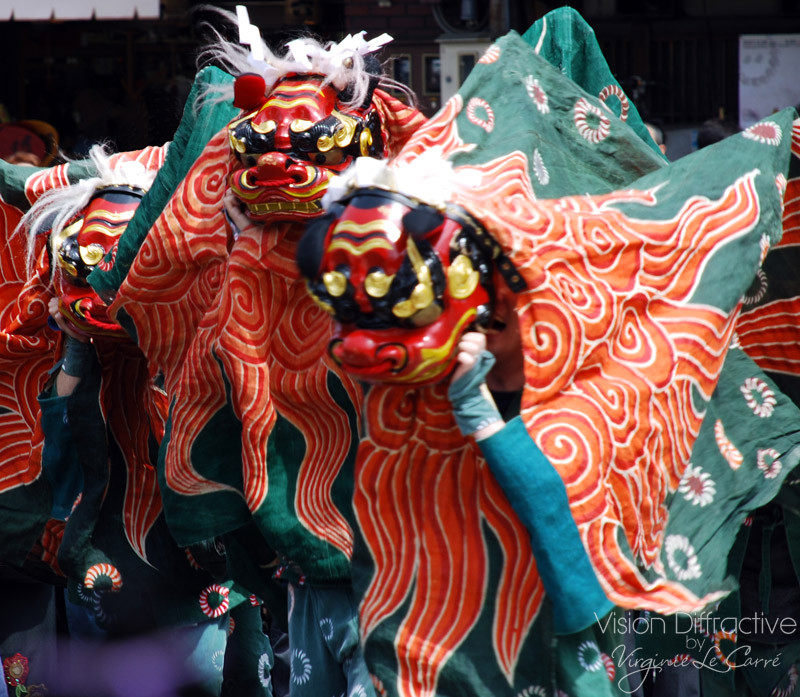
Source: ∴ Vision Diffractive ∴
Information
- Place: Kanda Myojin Shrine
- Address: 2-16-2 Sotokanda, Chiyoda-ku, Tokyo 151-8557
- Tel: 03-3254-0753
- Website: http://www.kandamyoujin.or.jp
Information
- Place: Hie Jinja Shrine
- Address: 2 Chome-10-5 Nagatacho, Chiyoda, Tokyo 100-0014
- Tel: 03-3581-2471
- Website: http://www.hiejinja.net/en
For those who plan to visit Tokyo in June, you need to remember that a must have item to bring with you as a good quality umbrella! June is the what they call in Japan “The Rainy Season” – which means that almost every day of the month you can expect sudden and at time massive rainfall. The rain is caused by seasonal hot and cold air systems clashing over the Japanese islands and causing intense rainfall yearly. Although urban life in Tokyo do not really changes due to the rain, it is best advised to be ready with a good umbrella at all times!
July
July symbolize the mid-summer festivities in Tokyo and is one of the best months to visit Tokyo and enjoy fireworks festivals and outdoor summer events. The fireworks festivals are happening weekly on each weekend and in many locations around the city. The tradition of the fireworks festivals is Japan can be traced back to the early Edo period, when fireworks were launched as part of festivals for the dead. The fireworks festivals played two roles in the Japanese mind, they were a mourning observances for the dead and family ancestors, as well as celebrations of life, and entertainment for the masses. Just in any other festival in Japan, the main reason was to gather everyone in Town, get socialized, enjoy company of others, and get your mind off work and life hardships. Today’s fireworks festivals are keeping the same concept of socializing, and enjoying the atmosphere of celebrations. Tokyo fireworks largest festivals taking off by the end of July and all throughout August. The main event for July is the Sumida River Fireworks Festival which runs at the last week of July and called in Japanese “Sumidagawa Hanabi Taikai”. It is located very close to Asakusa station on the Tokyo Metro Ginza Line and the Tobu Skytree Line. This festival location use as a backdrop the Tokyo Skytree Tower which especially for this event, is lit with a special and synchronized lighting show. This festival is also located right near Asakusa district which is one of Tokyo most traditional areas area and is very busy daily with tourists and visitors, so make sure to get there early and find your place among the thousands watching the show. In this particular festival, there is not really any sitting spots area and the best way to view it is walk the streets and find a good location with a clear and wide sky view to enjoy the show or simply walk around and stop from time to time and different spots to watch the show from many angles!
Information
- Place:
Venue 1: Sakura-bashi Bridge downstream – Kototoi-bashi Bridge upstream
Venue 2: Komagata-bashi Bridge downstream – Umaya-bashi Bridge upstream- Website: http://sumidagawa-hanabi.com
For those who likes sports and want to get out of central Tokyo, July offers one of the most exquisite nature adventures in Japan! July marks the beginning of the official Mt. Fuji climbing season which lasts from July to mid September. If you are in Tokyo at that time, it is highly reccomnded to try it out! You can easily take the bus from Shinjuku Station all the way to Mt. Fuji 5th elevation station and from there it is a walk of about 4.5km up the mountain trail together with thousands of other climbers to reach the summit and watch the sunrise!
In regards to the weather, July is still part of the rainy season in Japan and it is best advised to be equipped with umbrella until the second or third week of the month.
August
August is the hottest and most humid month of the year in Tokyo. Get ready to sweat like in a sauna and carry with you at all time fresh facial towels. Although the summer heat is reaching almost unbearable levels, it is also the time where the fireworks festivals are taking off in evenings and the main summer fireworks festivals in Tokyo all all concentrated in this month! One of the best fireworks events you should not miss is the Tokyo Bay Fireworks Festival which takes place in Harumi port area in Kachidoki on the first week of August. The events offers a fireworks display that last over 3 hours and is launched from the Tokyo Bay itself by a couple of massive barges which are located on both sides of the Tokyo Rainbow Bridge. If you plan to go there, make sure to go early as this event is so packed and if you want to get a good spot to watch it, you will need to get it among the thousands that flow toward Kachidoki area from early morning. The best and easiest way to reach Kachidoki area is by using the Oedo Subway Line which has a station in Kachidoki. The spectators are offered space in a massive parking area which is cleared especially for the event as well as on bridges, parks and all around Kachidoki and Harumi area. As the sun set, the barges from both side of the bridge start shooting the fireworks to the sky and the explosions are all mirrored on the bay water painting the whole area in colorful ambience. Add to that the beautiful view of the lit up Rainbow Bridge and the skyline of Shiodome skyscrapers and you get a picture perfect moment that last for hours!
Information
- Place: Tokyo Bay Fireworks Festival
- Venue: Harumi Port Area
The hot summer days of August also is a great opportunity to get away from the heat and enjoy getting wet in the traditional Fukagawa Hachiman festival. This festival is one of the best one to enjoy in August and it offers a really refreshing angle to it as the festival organizers use the Tokyo fire department to spare water over thousands of people who carry massive size portable shires through he streets of Tokugawa area. It is a sort of a massive water fight full of smiles and happiness which allows to break the summer heat in a most peculiar way! If you do plan to go to the festival, make sure to wear cloths that can be soaked in water, be sure to take only camera equipment that can be drenched in water, and a lot of good energy with you! It is fun, light hearted festival that last into the night hours when Japanese traditional food stalls are spread all over the Fukogawa district allowing the festival goers to keep on partying into the night!
Information
- Place: Hachimangu Shrine
- Address: 1-20-3 Tomioka, Koto-ku, Tokyo 135-0047
- Tel: 03-3642-1315
September
September in Tokyo is a mark to another switch in the city atmosphere and is the time when the city is shedding off the summer haze and getting slowly but surely into Autumn mode. The weather is not cold yet, but the Typhoon season is at full swing. At this time of the year you should expect almost weekly typhoons hitting the Japanese islands and in many cases the typhoon path is a direct hit on the Tokyo area. Although staying in the city is a way to get away from the typhoon wrath, the day before a typhoon and the couple of hours of the typhoon hitting the city itself are times you should stay away from the streets and keep honker down for safety.
Although the heat is over, it is still great time in Tokyo for outdoor events and starting in middle September in the Hibiya Oktoberfest event. The event takes place at Hibiya Park, right between Ginza area and the Imperial Palace. At the time of the event, the park is turning to look like a classic German beer festival with German food, and of course, massive German beer cups to enjoy the last hot days of the year. The Oktoberfest festival offers mostly German beers but you can also enjoy some of Japan best breweries showing off their special brew. If you like beer and enjoy German style outdoor events, try to Oktoberfest in Hibiya Park as it is the last chance to feel the good ol’ summer vibe in Tokyo!
Information
- Place: Hibiya Park
- Address: 1 Hibiyakoen, Chiyoda, Tokyo 100-0012
- Tel: 03-3501-6428
- Website: http://www.tokyo-park.or.jp/english
If you are into vide games and Japanese animation culture, there is a special event that happens every end of September which you should not miss – the Tokyo Game Show in Makuhari Messe convention center in Chiba. Also known as TGS, it is Japan’s biggest video game show which attract thousands of people for 3 days celebration of computer game culture. The convention offers a chance to get to know the newest games and game technology as well as an amazing photoshoot opportunity with cosplay models which dressed up as the game characters!
Information
- Place: Tokyo Game Show
- Place: Makuhari Messe Convention Center
- Tel: 043-296-0001
- Website: https://www.m-messe.co.jp/en/
November
November signals the winter coming into Japan and Tokyo is gearing up for those cold months ahead. To mark the changing of the season, Meiji Jingu Shrine in Harajuku is holding the Meiji Shrine Autumn Festival which is a great opportunity to see Japanese cultural demonstrations and performances from artists at the top of their class including martial arts, archery, traditional music and dance performances. All the performances are held in the shrine main stage starting at 10am and ending at 3pm.
Another reason to visit Meiji-Jingo Shrine in Harajuku is the Shichi-Go-San Festival which is held every November the 15th. In this date, kids that are age 3, 5, and 7 years old are visiting the Shinto shrines for a special celebration of coming to this age. If you want to see kids dressed up in full traditional Japanese Kimono, don’t miss that opportunity in Meiji-Jingu Shrine which is one of the main shrines Tokyo residents go to for that special event celebration.
Information
- Place: Meiji-Jingu Shrine
- Address: 1-1 Yoyogikamizonocho, Shibuya, Tokyo 151-8557
- Tel: 03-3379-5511
- Website: http://www.meijijingu.or.jp/english/index.html
November is also the best time to enjoy Autumn foliage in Tokyo parks and gardens. It is a great opportunity to see how beautiful nature is when the season switch and the green turn into yellow, brown and red everywhere. One of the most popular places in Tokyo to view the Autumn foliage is Icho Namiki Ginkgo Avenue where ginkgo trees lined in a long avenue in the center of Meiji Jingu Gaien Park. The uniquely trimmed trees turn a brilliant golden color in late November, drawing crowds of people to stroll under the leaves or relax at one of the sidewalk cafes along the street. The Icho Namiki starts about one block from Aoyama-Itchome Subway Station and splits the park to the other side.
Information
- Place: Meiji Jingu Gaien Park
- Address: 1-1 Kasumigaoka-cho, Shinjuku-ku, Tokyo 160-0013
- Tel: 03-3401-0312
- Website: http://www.meijijingugaien.jp/english
December
December is the month which turns Tokyo into one of the most romantic cities in the world. Right after the halloween ends on October 31st, the city colors turn all into green/red/white colors of Christmas and massive illuminations are built everywhere in the city. The weather turn cold and the city welcomes the winter with a brilliant shows of light! There are quite a lot of places to see beautiful illuminations but one of the most lavish displays are done in Roppongi Tokyo Midtown building and called “Midtown Christmas”. The show is actually divided to a couple of areas around the tower and each one is designed and illuminated completely different creating a winter wonderland of lights!
Information
- Place: Tokyo Midtown
- Address: 9-7-1 Asakusa, Minato-ku, Tokyo 107-0052
- Tel: 03-3475-3100
- Website: http://www.tokyo-midtown.com/en
Another beautiful place to experience the illuminations in a brilliant luxurious environment is to go to see the Marunouchi Naka-dori illuminations. The illumination is located right after Ginza district, in Yurkacho throughout Naka Dori street connecting Harumi Dori street and the Tokyo Station area. This illumination is in gold-champagne colors showcasing hundred of thousands of low energy powered LED lights. Walking Naka Dori to its end will land you right in front of Tokyo Station which at this time of the year is fully decorated with its own lighting system and even hold 3d projection shows!
Have a good trip and travel!
